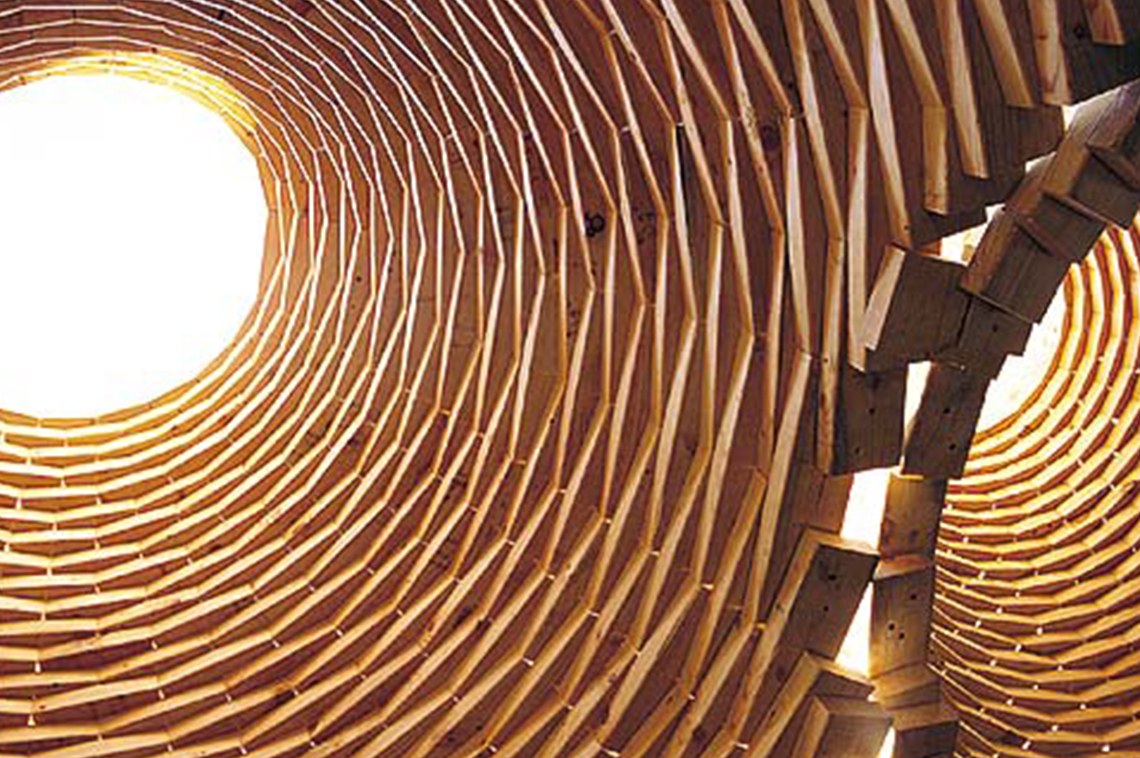
“Your designs are beautiful, but they are empty.”
I stood there—stunned—in my faculty advisor’s office. I had never heard anyone give me that criticism. I didn’t know how to respond. I was too Canadian to storm out dramatically, but too shallow to cry.
“You need to learn the science behind what you are designing, and make sure it works. Take some hydrology and geology courses. Make science beautiful.”
Now I understood. And with my ego and emotions in check, I got to work.
This pivotal episode in my life happened in 1995 in the office of Professor Louise Mozingo in the Department of Landscape Architecture and Environmental Planning at UC Berkeley. I was in my first studio in the Masters of Landscape Architecture program. I was complaining…actually complaining…that the studio was too easy because I already had a fine arts and an architecture degree and I thought I was pretty darn hot.
I look back and cringe. Geez…I was a pompous jackass.
Professor Mozingo set me on the path to researching stormwater runoff that eventually led me to my current position at the U.S. EPA. It was, and still is, an insidious environmental issue that was only beginning to be realized in the 90s. So, there was nothing inherently sexy about stormwater runoff, but I was determined to change that, and set out to explore how “green infrastructure” (a term that would come about a decade later) could be incorporated into street design that would not only make evident a natural process being used to solve a problem, but also make the street more beautiful.
To this day I can appreciate good design, but given my unabashed environmental bent, I am always looking to see if the design is being as kind to the environment as it is to the eye. Don’t get me wrong…I can still appreciate pure whimsy, or enjoy a space simply because it makes me feel good. For instance, when in New York I always stop by Paley Park in Manhattan. It is about as perfect an urban space as they come…nothing overtly environmental…just a gorgeous respite.
BUT, if you tell me that design is accomplishing a larger environmental goal, you’d best be applying a level of rigor to your claim. Developing a hypothesis on how a certain arts and culture intervention will improve environmental conditions is fine, but there first has to be an accepted degree of feasibility to the claim (just because one “feels” like something should work, doesn’t mean it will). This requires a base level of site assessment: if you need to infiltrate water, will existing soils allow that? If the sun’s rays are necessary to the design if you want to dig up culverts, do you know where they are? Basic stuff.
With that foundation, the fun can begin: experimenting. How will day-lighting a culverted stream bring back biodiversity to a neighborhood? Will replanting the urban forest fend off invasive species brought on by a changing climate? Can contaminated sites be bio-remediated with only plants? Or, more simply, will a child’s curiosity be sparked and lead them on a path to saving the planet? The forms and programing generated by these questions are limitless, but the artist is still not done. Next comes observing and measuring. An intervention based in scientific principles is not going to be static—it will change and evolve because some process is at work, and it is the process that provides meaning (and ideally apparent to the user/viewer without the need for the obligatory didactic sign).
A great example of how this can work is at the Golden Triangle in Dupont Circle, where five rain gardens replaced ugly underutilized concrete with grant assistance from the District Department of Energy & Environment. They add nearly 3,000 square feet of greenspace, which provides a valuable habitat and vegetation for butterflies and other pollinators and are recognized as a Certified Wildlife Habitat™ by the National Wildlife Federation. The rain gardens can filter tens of thousands of gallons of runoff annually in and around the area by capturing rainfall and controlling the storm water from the street to nourish the soil and plants. During a rainfall, the soil and drought-tolerant plants work together to filter the water that has fallen on the garden area. Storm inlets on the streets also drain water into the rain garden, allowing the plants and soil to filter the street runoff. Created by local sculptor Foon Sham, the imaginative pieces, ranging from nine to eleven feet tall, symbolize the functions of the rain garden to collect, hold, and filter excess rain water.
This, and every site like this are unique and conditions dictate what is and is not possible, but if there is a great idea on how science can create a beautiful, environmentally-friendly place then the concept should be replicable elsewhere. I see no problem with good ideas being adapted to other places…my problem is just with the bad ones that over-promise and under-deliver.
These words will always be with me. “You need to learn the science behind what you are designing, and make sure it works.”





